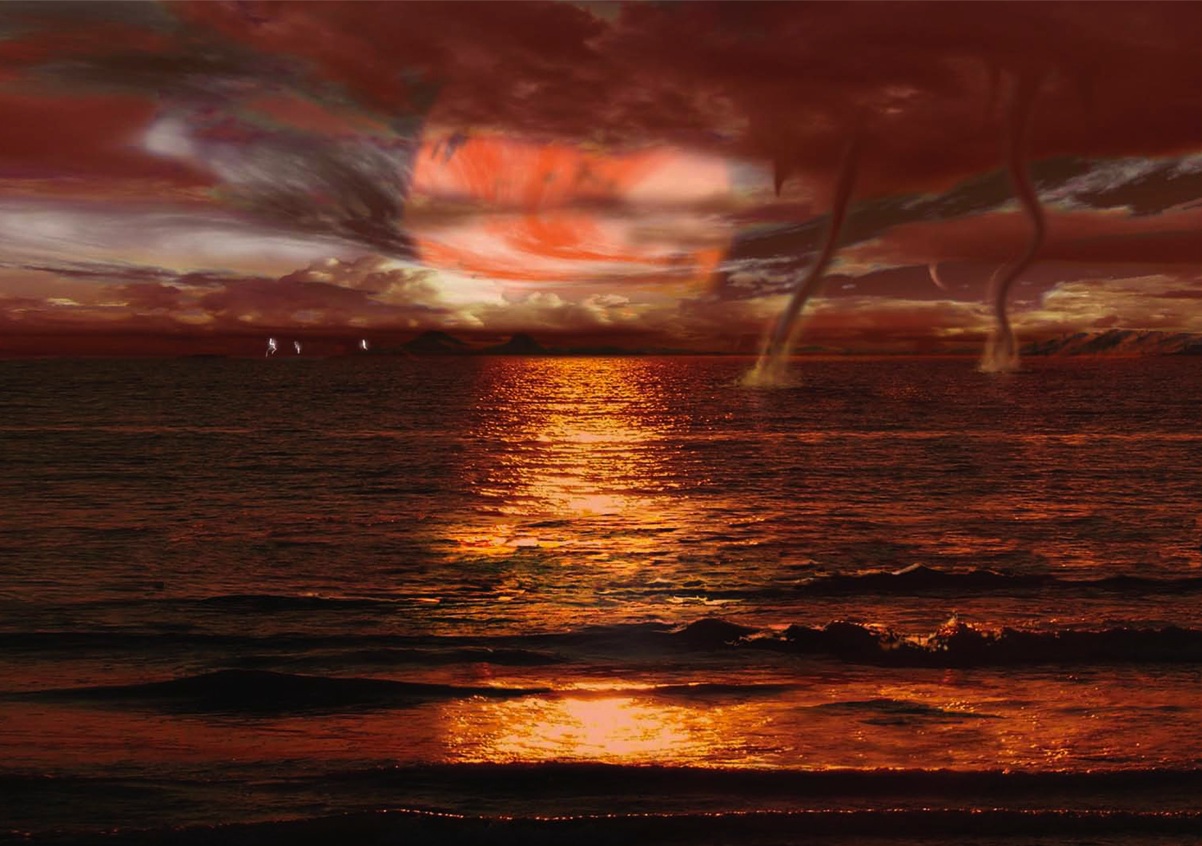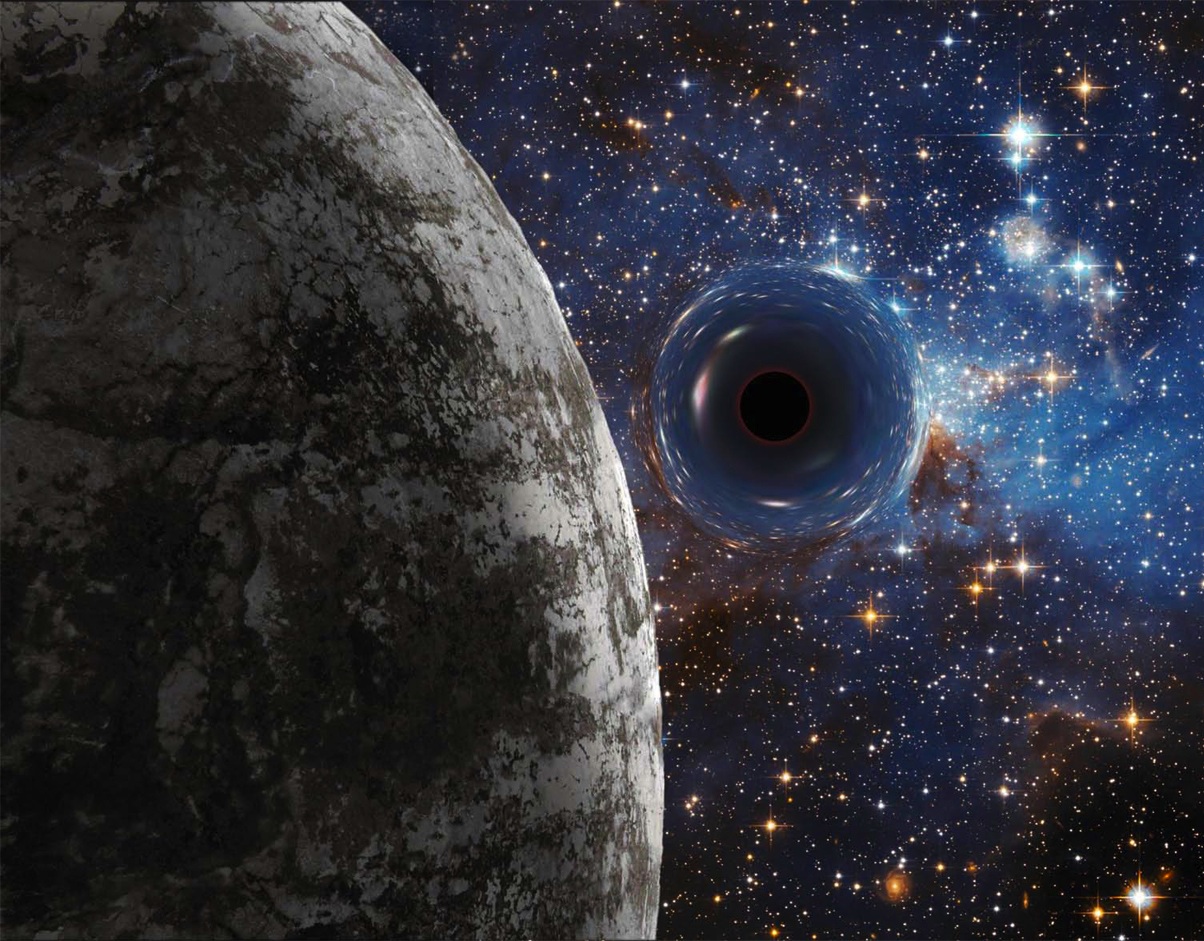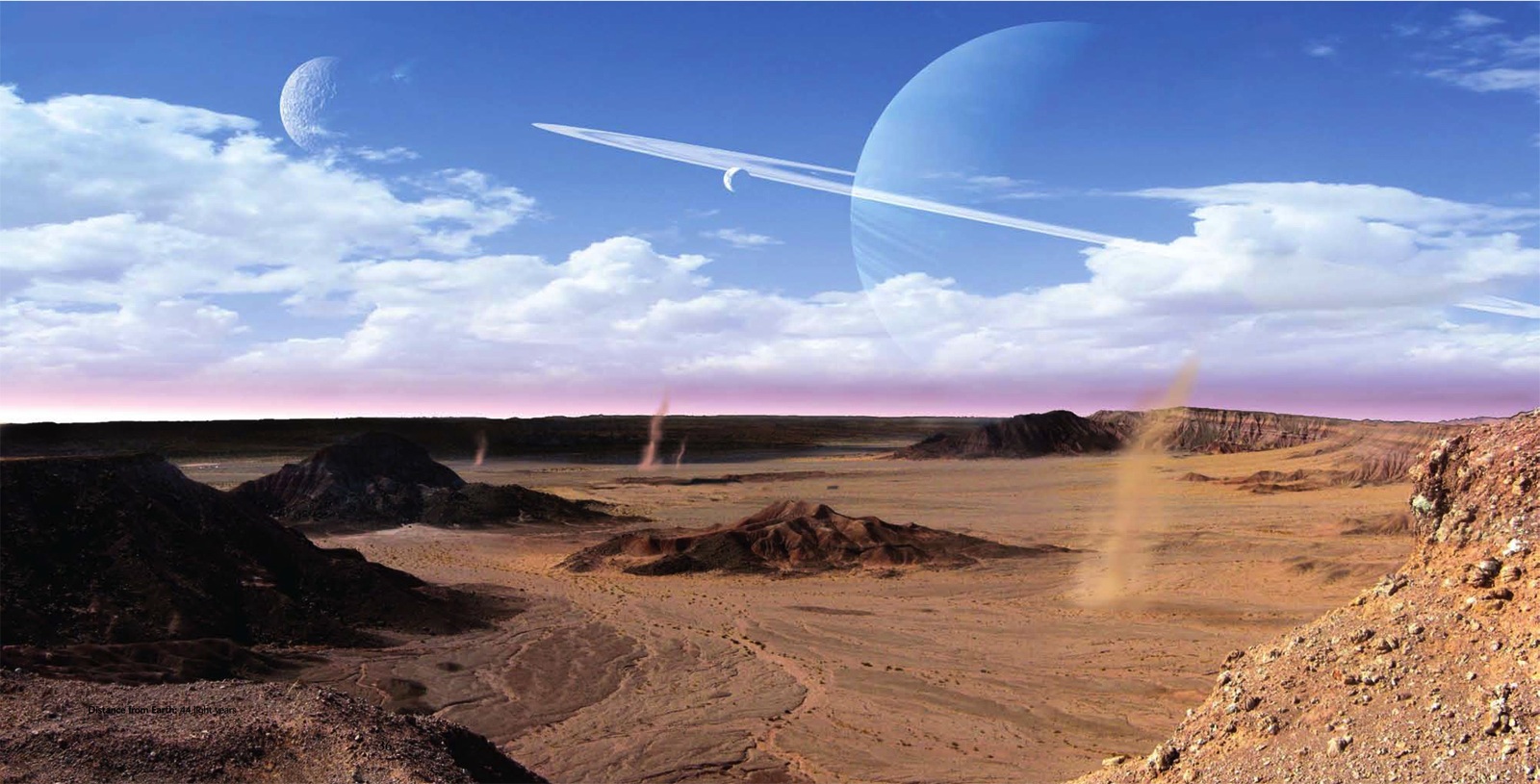When I was painting traditionally—before I moved to digital media—I almost never did preliminary sketches… except perhaps for the occasional thumbnail doodle to remind me of an idea. And after doing astronomical art for forty years, not much has changed in that regard: I have such a clear-cut idea of how the finished artwork is going to look that in a very real sense the preliminary sketches are already done. Now I work almost exclusively in digital media (a decision I made when I found myself having to both write and illustrate a series of ten books… and realizing there was no way to meet my deadlines). I had been reluctant to abandon traditional media, but when I presented my first efforts to my friends and heard them say, “Why, these look just like Ron Miller paintings!” I was sold—so much so that I’ve done only a couple traditional paintings since.
In a real sense, I am still working traditionally. Right off the bat is the research. Sometimes this can take longer to do than the picture itself. And when I’m working with really new discoveries, I’ve had pictures go out of date while I’m still working on them. Sometimes the research is pretty straightforward. I have a huge library here in my studio, and filing cabinets filled with materials. If I’m dealing with something hot off the press, I try to look up the papers and reports or even contact the scientists involved. They are almost invariably cooperative and very eager to make sure that everything looks right. I’m sometimes asked if I feel constrained or limited, having to work as I do within factual parameters. No—no more, really, than an artist doing a portrait or a landscape of the Grand Canyon.
There are limits there, too, as to how far you can stray from reality and still say that you’ve done a picture “of” that subject. If, say, the painting you just did of your mother looks more like George Washington, well, perhaps you ignored your reference material a little too much. In any case, rather than imposing restraints, having to create within factual boundaries is far more a challenge than a limitation. The goal is always, for me at least, to not just make a scientifically accurate illustration, but one that is aesthetically successful, too. That is, it has to be a good landscape before anything else. It can’t just depend on the novelty having something funny in the sky.

I use a graphics tablet that allows me to draw and “paint” with a stylus in much the same way that I used to use a pencil or brush—just without all the messy bits like mixing paint and cleaning out air brushes. Most often, I will use a small program called Terragen to help create my landscapes. I will first use Photoshop to paint a small square, knowing that Terragen will interpret light areas as being high and dark as low. What I am essentially doing is making a kind of topographic map. By going back and forth between Photoshop and Terragen, I can refine every bump and wrinkle in the landscape until every detail is exactly where I want it to be. Sometimes this process can take all day. Then I allow Terragen to render the landscape.
The job’s not done yet, however. Rarely if ever will Terragen knock out exactly what I have in mind. Instead, what I wind up with is a foundation. Then I import the Terragen image into Photoshop where I will complete the picture, adding features, refining details, and more. This might include images like lightning, volcanic eruptions, stars and planets, and whatever else the final illustration requires.

All of this can take anywhere from hours to days, depending on the complexity. And it can take any number of different techniques. For instance, I’m an obsessive collector of textures and landscape details. I take my camera everywhere. If I see a nifty rock formation, for instance, it goes straight into my reference files. I have thousands of images of rocks, water, clouds, and more to draw upon. I might eventually use that rock formation, or some part of it, directly in one of the illustrations. I have even gone so far as to set up miniature table-top landscapes in order to photograph exactly what I want.
Other times I might go very low-tech. For instance, the entire eruption of a volcano on Io was drawn with an ordinary pencil on paper and then scanned into the finished art. All of this is enormous fun. And, as every illustration entails a different set of problems with different solutions, I am always experimenting and learning something new. Even after a decade of working digitally, the novelty has yet to wear off.
Ron Miller has been a freelance artist and author specializing in astronomical subjects for more than thirty years. His latest project is the award-winning iPad app, Journey to the Exoplanets, which he created for Scientific American / Farrar, Straus and Giroux in collaboration with Ed Bell. Learn more at: www.the-exoplanets.comand http://www.black-cat-studios.com.










